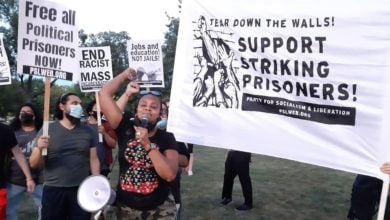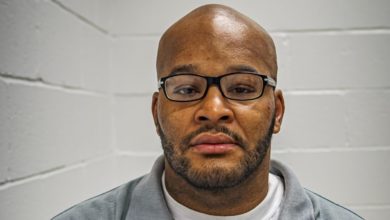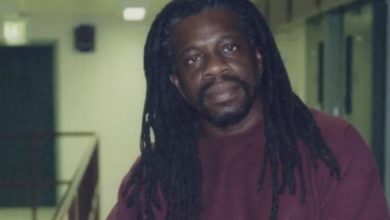This article first appeared on the website of the Alliance for Global Justice
The United States government has deep ties with the Kingdom of Saudi Arabia’s penal system, and with the entire Ministry of Interior, which oversees the kingdom’s police, courts, and jails. The American Correctional Association (ACA), a trade organization that collaborates and contracts with the US government, is likewise linked with Saudi jail personnel. (The ACA accredits 80% of correctional facilities in the U.S. at the state level, many federal and private prisons, as well as prisons around the world.) U.S.-Saudi ties have included consultations to set international prison standards, and training programs for Saudi prison personnel. The Alliance for Global Justice has confirmed links between U.S. and Saudi Arabian prison personnel since at least 2009. The involvement of the United States in Saudi Arabia’s prisons and its justice system is an example of Prison Imperialism, referring to US efforts to spread its model of mass incarceration to other countries.
Today’s Prison Imperialism programs were preceded by a relationship with Saudi Arabia and over 50 other countries globally through the Extraordinary Rendition program. Saudi Arabia was one of several countries that participated in the program begun under the Clinton administration and officially ended by President Obama. Extraordinary Rendition was the practice by the Central Intelligence Agency of handing over persons alleged to be terrorists, to be tortured at secret interrogation centers. Detainees were arrested and jailed without due process in violation of international norms and agreements. This program was created to circumvent standards of human rights and the U.S.’ own laws.
Specific Examples, 2008 through 2013
As early as 2008, 30 Saudi Arabian students and prison personnel spent two years at Ohio Northern University studying Ohio’s prison system, including direct observation at the Lebanon Correctional Institution and the Warren Correctional Institution, and classes with representatives of the Ohio Department of Correction and Rehabilitation. Saudi Arabia’s Ministry of the Interior says that it routinely sends personnel for such classes in the U.S., Canada, France, and other Arab countries.
Likewise, the ACA has its own internship and training programs for international prison personnel and students. An example is the 2010 partnership between the ACA and the Kingdom of Saudi Arabia that brought Saudi prison managers to its headquarters in Alexandria, Virginia. There they received instruction from federal, state, and local prison officials from Maryland, Virginia, and Washington, DC, as well as from ACA officials and past presidents, and a retired director of the Ohio Department of Correction and Rehabilitation. According to Jeannelle Ferreira, in Corrections Today,
“Five groups of Saudi corrections professionals visited in order to improve their leadership skills, prepare themselves for possible promotion, and take home a set of core competencies for the employees they supervise. Two more sessions are planned for 2012, one to train upper-level managers and a second focusing on those working at line officer level.”
Saudi Arabian officials also advised the ACA in 2010 and 2011 about its international prison accreditation criteria, as evidenced by this entry to the Standards Committee Meeting Minutes for the 141st Congress of Correction held in Kissimmee, Florida on August 5, 2011:
“James A. Gondles addressed the Committee regarding the creation of Core International Standards by the Association and emphasized the important opportunities being presented to the Association from foreign nations. Mr. Gondles outlined the interactions between members of the Association leadership and those at high levels in the corrections system in Mexico, Saudi Arabia, and the UAE [United Arab Emirates] regarding the creation and testing of new standards.”
The Intercept published an April 2013 National Security Agency memo leaked by Edward Snowden that discussed “direct analytic and technical support” to the Saudi Ministry of the Interior (MOI) for “internal security”. Reporters Glenn Greenwald and Murtaza Hussein note,
“The Saudi Ministry of Interior… has been condemned for years as one of the most brutal human rights violators in the world. In 2013, the U.S. State Department reported that ‘Ministry of Interior officials sometimes subjected prisoners and detainees to torture and other physical abuse,’ specifically mentioning a 2011 episode in which MOI agents allegedly ‘poured an antiseptic cleaning liquid down [the] throat’ of one human rights activist. The report also notes the MOI’s use of invasive surveillance targeted at political and religious dissidents.”
But as the State Department publicly catalogued those very abuses, the NSA worked to provide increased surveillance assistance to the ministry that perpetrated them. The move is part of the Obama Administration’s increasingly close ties with the Saudi regime; beyond the new cooperation with the MOI, the memo describes ‘a period of rejuvenation” for the NSA’s relationship with the Saudi Ministry of Defense.’”
New Developments under the Trump Administration
The Trump administration has not only stayed the course of involvement with the Saudi prison system, it has launched a major effort to provide training to correctional officers for women’s prisons. The U.S. State Department’s Bureau of International Narcotics-Law Enforcement (INL) released a Grants Notice on February 3, 2017, soliciting bids by vendors to participate in its Female Corrections Academy Training, Development, and Mentoring Assistance Project, a training program for women’s prison personnel in Saudi Arabia. In INL’s Request for Statements of Interest (RSOI), it describes the project:
“Participants will work in close collaboration with the INL team of corrections subject matter experts in Washington, D.C. and the U.S. Embassy in Riyadh, Saudi Arabia, the Department of State’s Office of Program Management – Ministry of the Interior-United States (OPM-MOI-US), and GDP [General Directorate of Prisons] Female Corrections Training Academy to deliver training of trainers for up to 50 female corrections training academy instructors from the GDP. …. INL will be responsible for implementing the project…. INL will provide two Senior Corrections Advisors (through a separate implementing agreement) based in Riyadh, Saudi Arabia to provide mentoring, advice, and technical oversight of the Corrections Project. “
The US State Department updated the training project for women corrections officers in Saudi Arabia with a September 28, 2018 call for vendors to seek grants for what the Saudi Arabian Women’s Corrections Training Academy.
A perusal of announcements and press releases for the 2017 and 2018 bid request prominently mention training about human rights. But in the supplemental description of the 2017 grant, several course tracks are described, and whenever human rights are mentioned, they are just one of many subjects covered during training. In the most basic and general course track, human rights are lumped in with Prison Management. Some of the other subjects seem more ominous, including “Dynamic Security”, “Use of Force”, “Basics of Disturbance Control”, “Defensive Tactics”, “Roving Patrols”, and “Less-Than-Lethal Systems”. One of the certification tracks is especially alarming, given Saudi Arabia’s use of torture and questionable interrogation techniques: Prison Intelligence Unit Operations/Security Threat Groups (Specialized Course). Notably, there is no mention of human rights in the subjects covered in that course.
The War on Drugs, Human Rights, Women’s Rights, and Prisoners’ Rights
The development of the training courses and academy are directly tied to the War on Drugs. A supplement to the 2017 announcement of the women’s correctional academy emphasizes the INL’s role and mission, pointing out that,
“INL leads the Department of State’s anticrime and counter-narcotics efforts…. The resources entrusted to us, enable INL to deliver technical assistance and capacity to: enhance international drug control through interdiction and supply reduction; develop civilian law enforcement capacity, regional partnerships, and information sharing; and further the administration of justice and corrections under the rule of law with respect for human rights.”
However, we must ask, how much of a concern is Saudi Arabia as a narcotrafficking center? By the State Department’s own admission, very little. In fact, a 2005 International Narcotics Control Strategy Report by the INL states that,
“Saudi Arabia has no appreciable drug production and is not a significant transit country…. The Saudi Government places a high priority on combating narcotics abuse and trafficking. Since 1988, the Government has imposed the death penalty for drug smuggling…. Saudi and U.S. counter narcotics officials maintain excellent relations…. Cultivation and production of narcotics in Saudi Arabia is negligible…. Saudi Arabia is not a major transshipment point.”
Of course, that was 2005, and this is 2019. However, in the last such INL country report, Saudi Arabia is not even listed among the profiled countries of concern. We see the false flag of “counter-narcotics” used to justify support for an autocratic and repressive regime. Even so, between 2014 and May 2018, nearly 600 executions took place in Saudi Arabia, one third of them for drug convictions. According to Sarah Leah Whitson, Middle East Director for Human Rights Watch,
“It’s bad enough that Saudi Arabia executes so many people, but many of them have not committed a violent crime. Any plan to limit drug executions needs to include improvements to a justice system that doesn’t provide for fair trials.”
The U.S. government and the ACA both often predicate their activities in foreign prison systems with expressions of concern for human rights. The Alliance for Global Justice has researched US involvement globally, with special attention given to programs in Colombia, Honduras, and Mexico. We have found in case after case that following U.S. involvement in foreign prison systems, reports of human rights abuses have gone up, overcrowding has increased, and numbers of political prisoners have risen. Studies by others of U.S. run or supported prisons in Guantánamo in occupied Cuba, Bagram in Afghanistan, or Abu Ghraib in Iraq, bear out our findings.
This history is important for us to understand clearly that when the U.S. government claims it aims to improve human rights in the Saudi Arabian prison system, it does so despite a track record of insincerity and false promises.Nevertheless, given those assurances, and given the focus of U.S. involvement specifically in Saudi Arabia’s women’s prisons, we must look at the current context of human rights, prisoner rights, and women’s rights in the country.
The Kingdom of Saudi Arabia has long used its Ministry of Interior and imprisonment and executions to crush political dissent,target women’s rights activists, and to exercise religious intolerance. In 2017, Saudi Arabia committed the world’s third highest number of executions, 146. Saudi Arabia leads the world in beheadings, its preferred form of capital punishment. After the 2015 ascendancy of King Salman al Saud, 2016 saw the highest number of Saudi executions in 20 years. Since the consolidation of his power as Crown Prince Mohammed Bin Salman in June of 2017, by March 2018 there were 133 beheadings, compared with 67 in the eight-month period before that. Those especially vulnerable are migrant workers and women, who are often unable to pay “blood money”, which can buy their ways off death row. For instance, according to Amnesty International, in 2013, 45 foreign maids were awaiting beheading on the kingdom’s death row.
Since 2015 political arrests and arrests of women have both risen, especially now, under the watch of the Crown Prince.In 2016, during a mass execution of 47 persons, the kingdom executed eight Shiite activists for participating in protests inspired by the Arab Spring. Another 14 persons were arrested in 2016 for similar “crimes”. Israa al Ghomgham, a Shiite woman and pro-democracy activist, is even now awaiting execution for her role in organizing protests.
Earlier in 2018, dozens of pro-democracy and women’s rights activists, as well as journalists were arrested, several without formal charges and without access to communication. Many of these are still imprisoned. In May 2018, 15 women’s rights activists were branded as “traitors” and arrested, several for their activities pressing for a woman’s right to drive, despite that the government was simultaneously preparing to lift the ban. Among the women driving advocates arrested were Emam al-Nafjan, who maintains the Saudiwoman blog, and blogger Nouf Abdulaziz, who is being held incommunicado.
The Committee to Protect Journalists reports that,
“CPJ is investigating the possible jailing of at least 10 other journalists since Salman took power, but news of detentions sometimes doesn’t surface for months. Activists in contact with CPJ often have no knowledge of when authorities detained someone or where they are holding them. The journalists’ profile pages and blogs disappear behind “404 not found” messages, leaving only a breadcrumb trail of social media posts that stop the day of a rumored arrest.”
As for prison conditions in Saudi Arabia, generally, in 2017, the United Nations Human Rights Commission visited 857 Saudi prisons and detention centers, describing them as “appalling” and citing overcrowding, inadequate health care, and unavailability of services for handicapped inmates among other concerns.
Following a visit in June 2018 by UN Special Rapporteur on anti-terrorism Ben Emmerson, he alleged that Saudi Arabia is using the charge of terrorism to justify torture, crush dissent, and imprison human rights defenders. According to Emmerson,
“Those who peacefully exercise their right to freedom of expression are systematically persecuted in Saudi Arabia. Many languish in prison for years. Others have been executed after blatant miscarriages of justice…. A culture of impunity prevails for public officials who are guilty of acts of torture and other ill-treatment…. Under Crown Prince Mohammed bin Salman, Saudi Arabia is undergoing the most ruthless crackdown on political dissent that the country has experienced in decades….
When we assess the involvement of the US government and ACA in the Saudi Arabian prison system, what we find is a pattern consistent with prison imperialism programs: disregard for human rights or for prison conditions despite pronouncements otherwise. U.S. collaboration with the Saudi Arabian prison system has coincided with a worsening of abuses.
The Real Purpose of Prison Imperialism Programs
The real purpose of prison imperialism programs in Saudi Arabia is connected to its overall US objectives with the country, especially to its military strategies. By reinforcing Saudi Arabia’s capabilities for war at the same time as its repressive capabilities at home, the US assures the internal stability of this important partner, while backing its political and military dominance in the region. It is not a strain to make the connection between U.S. support for Saudi prisons and for its military. Three months after the Trump Administration began soliciting participation in the women’s correctional academy and training project, it signed a $110 billion military accord with the Kingdom.
An October 16, 2018 document by the US Department of State’s Bureau of Military-Political Affairs tells us that,
“Saudi Arabia is the United States’ largest foreign military sales (FMS) customer, with over $114 billion in active cases. With the signing of the May 2017 $110 billion agreement to pursue Saudi Armed Forces modernization by President Trump and King Salman, we expect a significant increase in FMS and DCS [Direct Commercial Sales] cases…. The Saudis have agreed to receive training from U.S. forces on Law of Armed Conflict (LOAC) and best practices for preventing civilian casualties.”
Thus, the same State Department that gives assurances of its concern for human rights in Saudi Arabian prisons expresses commitment to reducing civilian casualties in Yemen. Unfortunately, it appears that they have failed miserably. According to Armed Conflict Location and Event Data Project (ACLED), between June and September 26, 2018, a couple of weeks before the State Department document, civilian casualties had spiked 164%, with a monthly total of 166 civilian casualties.
U.S. support of Saudi Arabia’s military capabilities and its justice system are both about maintaining and protecting US hegemony in the region, and about protecting the flow of Saudi Arabia’s oil and oil profits. Whether in the hands of Democrats or Republicans or both, the objective of the U.S. government is to maintain the royal family in power.
People in the United States are rightfully upset over revelations about the extrajudicial execution of journalist Jamal Khashoggi, and over the humanitarian crisis occurring in Yemen. But we can expect that any US government repercussions toward Saudi Arabia will be temporary at best unless there is a vocal and protracted popular movement for real action.
If we are going to end US support for the royal family of Saudi Arabia, political leaders on all sides must be shown that the people’s interests are not the same as the Empire’s. We must defend people’s rights from Saudi Arabia to South Los Angeles, from Yemen to Yonkers. And if our leaders don’t recognize those interests, then we need to get rid of them and change this system until it reflects our desires for peace and justice everywhere.






